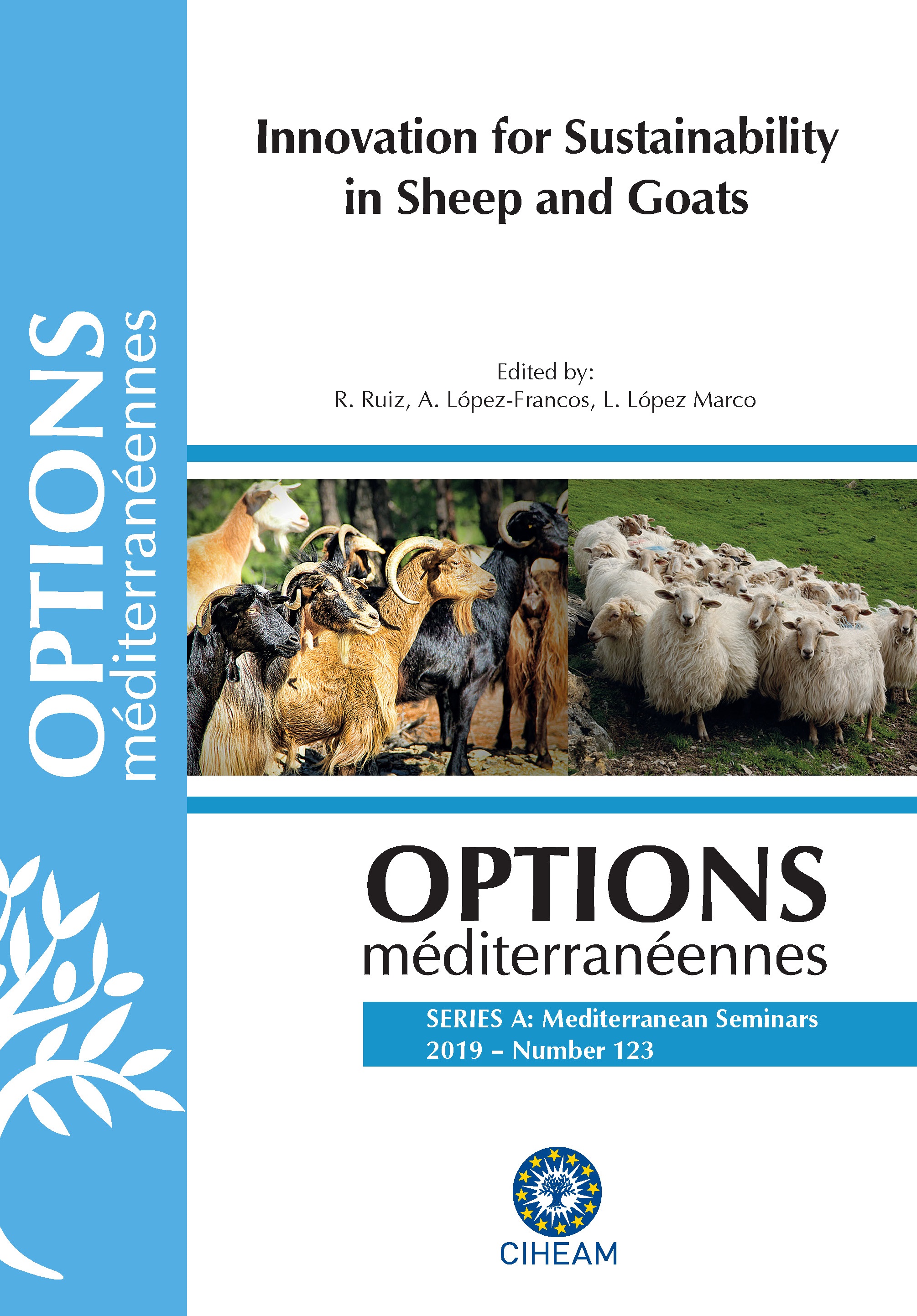| Article précédent | p. 385-388 | Article suivant |
Remote sensing for real time estimate of aboveground biomass productivity in mountain pasture
Precision grazing may increase the farm business productivity, through improved pasture and animal management. One of the main issue is to estimate the real productivity of the pasture, in order to program the correct grazing load at each moment of the year. The aim of the study was to verify if the data acquired by the new European satellite system named “Sentinel 2” could be used for estimation of aboveground biomass in a mountain pasture. During 2016 growing season, in a Central Italy mountain pasture (M. Tilia, Rieti), we built nine grazing exclusion fences (12 m x 12 m), including the Sentinel 2 acquisition grid (10 m x 10 m pixel). Inside each plot, we cut grass (5 m2) once a month for three months. The grass was weighed and analyzed for chemical and physical parameters. At the dates matching with cuts, free-of-charge red and infrared bands were acquired from Sentinel 2 data hub, in order to calculate NDVI (Normalized Difference Vegetation Index). In a GIS environment, we extract NDVI values for each plot. To explore how NDVI relate to biomass, linear regression analyses were performed. NDVI, varying from 0.41 to 0.83, showed strong linear relationships with green biomass (R2 = 0.6356). A lower relationship was observed between NDVI and dried biomass (R2 = 0.4678). The model, after being further refined, can be used to spatialise data over vast grazing areas, with high temporal frequency (5-10 days), helping in a more precise planning of livestock grazing.
Le pâturage de précision peut augmenter la productivité des entreprises agricoles, grâce à l’amélioration de la gestion des pâturages et des animaux. L’un des principaux problèmes est d’estimer la productivité réelle du pâturage, afin de programmer la charge des animaux correcte à chaque moment de l’année. Le but de l’étude était de vérifier si les données acquises par le nouveau système européen de satellites appelé “Sentinel 2” pouvaient être utilisées pour l’estimation de la biomasse aérienne dans un pâturage de montagne. Au cours de la saison de croissance 2016, dans un pâturage de montagne de l’Italie centrale (M. Tilia, Rieti), nous avons construit neuf clôtures d’exclusion de pâturage (12 m x 12 m), y compris la grille d’acquisition de Sentinel 2 (10 m x 10 m de pixel). À l’intérieur de chaque parcelle, nous coupons l’herbe (5 m2) une fois par mois pendant trois mois. L’herbe a été pesée et analysée pour des paramètres chimiques et physiques. Aux dates correspondant aux coupures, les bandes rouges et infrarouges gratuites ont été acquises de Sentinel 2, afin de calculer le NDVI (Normalized Difference Vegetation Index). Avec un software SIG nous avons extrait les valeurs de NDVI pour chaque parcelle. Pour explorer comment NDVI se rapporte à la biomasse, des analyses de régression linéaire ont été. NDVI, variant de 0,41 à 0,83, a montré de fortes relations linéaires avec la biomasse verte (R2 = 0,6356). Une relation inférieure a été observée entre le NDVI et la biomasse séchée (R2 = 0,4678). Le modèle, après avoir été affiné, peut être utilisé pour spatialiser les données sur de vastes zones de pâturage, avec une fréquence temporelle élevée (5-10 jours), ce qui aide à une planification plus précise du pâturage.
- [ Afficher ]
- [ Télécharger ]
- [ Exporter la citation ]
Vous pouvez télécharger la citation au format :
- [ Imprimer ]
-
Mots-clés
PATURAGE, PRAIRIE, TELEDETECTIONCiter cet article
Ronchi B., Primi R. Remote sensing for real time estimate of aboveground biomass productivity in mountain pasture. In : Ruiz R. (ed.), López-Francos A. (ed.), López Marco L. (ed.). Innovation for sustainability in sheep and goats. Zaragoza : CIHEAM, 2019. p. 385-388. (Options Méditerranéennes : Série A. Séminaires Méditerranéens; n. 123). 2. Joint Seminar of the Subnetworks on Nutrition and on Production Systems of the FAO-CIHEAM Network for Research and Development in Sheep and Goats, 2017/10/03-05, Vitoria-Gasteiz (Spain). http://om.ciheam.org/om/pdf/a123/00007917.pdf



